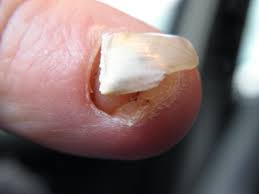Your nail may fall off due to a number of situations. Whatever the cause, it can be an extremely frustrating experience to lose a fingernail, which can make otherwise simple tasks quite difficult and painful. Not only does your exposed nail bed make you feel serious pain, it also looks quite unsightly. Knowing the causes of fingernail falling off may help identify the best treatment option. Let's find out more about it.
What Can Cause Fingernail to Fall Off?

1. Injuries
Physical trauma to your fingers may damage your fingernails. A fingernail may even fall off from the nail bed, which also leads to bleeding and bruising. Anyone can sustain such injuries but they are relatively more common in sports persons related to volleyball, basketball, etc.
2. Fungal Nail Infection
One of many reasons of fingernail falling off could be a fungal nail infection. Many types of fungi can cause nail infections. An infection can change the appearance of your nail. Your nails will become discolored first and then damaged and thickened. They eventually fall off, leaving you in serious pain.
3. Onychia
Onychia is a nail disorder that can affect both adults and children, and it can cause the tissues of the nail bed to become inflamed. It may also affect the tissues around the fingernail plate. You develop this problem when virus, bacteria, or other pathogenic microbes enter these tissues through cuts and injuries. You may also develop pus around and underneath the nail plate. As a result, your affected nail falls off.
4. Other Causes
There can be many other relatively uncommon causes of fingernail falling off. For instance:
- Psoriasis and other skin conditions
- Chemicals found in soaps and acetone nail polish removers
- Medicines, such as anti-malarial medicines and chemotherapy medicines
- Allergy
- Overactive thyroid gland
- Poor blood circulation in the fingers
How to Deal with a Fingernail That Is Falling Off
You can always try some natural remedies and take measures to promote healing and relieve pain. Treatment usually involves removing the nail and keeping the affected area dry to keep infection at bay. You have to take precautionary measures until your nail grows back. It is equally important to treat the underlying condition that may have caused the nail to fall off in the first place. Here are some steps to take when you have your nail falling off.
- Use a nail file to eliminate sharp edges and trim the nail if possible.
- Try to trim off any detached part of a large tear but do not push it too far.
- Use tape to cover the nail until it grows out enough to protect your finger.
- Make use of scissors to get rid of any detached part of the nail. Do it if your nail is partly attached.
- Get some cold water and soak your affected finger in it for 20 minutes after you have trimmed the nail.
- Use an antibiotic ointment to prevent infections.
The most important thing is to keep your nail from becoming infected. Here are some steps to take in this regard:
- Take 4 cups of warm water and add a teaspoon of salt to it. Now, soak your affected hand in the solution for 20 minutes at least thrice a day for three days. Keep using the antibiotic ointment as well.
- Take special care of the nail bed and keep it clean and dry. Apply antibiotic ointment to cover the nail bed completely.
- Do not ignore any early signs of infection, such as redness, increasing heat, tenderness, pain, pus, or swelling.
When to See Your Doctor
Taking these measures will certainly help, but it is sometimes necessary to see your doctor for assistance. For instance, you should talk to your doctor when:
- You have not been able to trim your nail properly
- You have blood pooled up under the nail
- You cannot bend your finger easily
- You have open skin that needs stitches
- You have peripheral arterial disease, diabetes, or an immune system problem. These problems affect the circulation of blood and hamper the recovery process. These medical conditions increase your risk of developing infections and other serious problems.
How to Prevent Fingernails from Falling Off
It can be an extremely painful situation to lose your nail, therefore it is better to take necessary steps to avoid losing your nails in the first place. Here are some steps to take:
- Be very careful when engaging in sporting activities such as volleyball and basketball.
- Keep your hands clean and wash them thoroughly. Also, dry your fingernails properly with a clean towel after cleaning.
- Keep your nails trimmed and smoothen their edges with the help of a nail file.
- Consult your podiatrist soon after you experience any signs of fingernail falling off, such as splitting, discoloration, and loosening.
- Do not tear the nail that looks partially torn, bandage it instead and see your healthcare provider.
- Keep your manicure and pedicure tools clean. Disinfecting them regularly is equally important to keep your nails in good condition.
